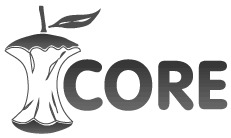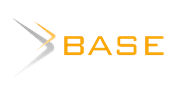Technology Readiness Level and Design Thinking: A review of cases observed from a research seedbed
DOI:
https://doi.org/10.36881/yachay.v13i2.954Keywords:
Technology Readiness Level - TRL, Design Thinking, Case studies, FailureAbstract
This document focuses on the analysis of the different technological innovations or product development, observed as failures when failing in any of the different stages of the Technology Readiness Level (TRL), being presented as mini case studies, systematization carried out from a hotbed of investigation., and that is interesting since usually the success cases are deeply documented and not the failures. The document reviews the literature both related to TRLs, and its various axes of analysis, as well as Design Thinking, a tool both to shorten the time in the advancement of TRLs and to improve expectations of success in the development of technologies and products. The objective of the research is to closely examine several examples of products that, despite having successful launches, did not remain on the market. This study seeks to detect errors, learn from them and propose practical measures to improve the creation and development processes of new products. As a methodology, a set of case studies of products recognized in the world market that have failed either as technological solutions or in their acceptance by the market have been reviewed; The review has been carried out based on information available on the web from both the company that offers the product and critics. The analysis is carried out explaining the company, the product, as well as the possible failure or error. As a result, mini case studies are presented, and reflections on how Design thinking together with TRL can improve the development of technologies and products, from the perspective of the hotbed it is a learning not only about technical aspects of TRL and Design Thinking but also about failure in the development of companies and products
Downloads
References
Altimira, J. (2024, julio 22). Design Thinking. Upbizor. https://www.upbizor.com/ecosistema-empresarial/design-thinking
Bfernandois. (2024, febrero 07). 5 fases del Design Thinking: Innovación en práctica. Fusiona. https://fusiona.cl/blog/ux/5-esenciales-del-design-thinking/
De Aldecoa Quintana, J. M. I. (2014). Niveles de madurez tecnológica: Technology readiness levels: TRLS : una introducción. Economía industrial, 393. 165-171. https://dialnet.unirioja.es/servlet/articulo?codigo=4860497
de Villiers, R. (2022). Design Thinking as a Problem-Solving Tool. In The Handbook of Creativity & Innovation in Business: A Comprehensive Toolkit of Theory and Practice for Developing Creative Thinking Skills (pp. 223-242). Singapore: Springer Nature Singapore.
Macaronesia Digital. (2024, marzo 21). Escala TRL en innovación. Macaronesia Digital https://macaronesiadigital.com/trl/
El Espectador. (2021, agosto 23). Vacuna de Pfizer contra el coronavirus recibe aprobación completa de la FDA. El Espectador. https://www.elespectador.com/salud/vacuna-de-pfizer-contra-el-coronavirus-recibe-aprobacion-completa-de-la-fda/
Universidad de los Andes Colombia. (s.f.). Estamos preparados para el auge de la Inteligencia Artificial. Recuperado Noviembre 25, 2024, de https://www.uniandes.edu.co/es/noticias/estamos-preparados-para-el-auge-de-la-inteligencia-artificial
LAB Digital Creative. (2019, febrero 21). Why just a Facebook business page isn’t enough. Memphis Web Design and Digital Marketing Agency; LAB Digital Creative. https://labdigitalcreative-com.translate.goog/7-reasons-just-having-a-business-page-on-facebook-is-not-enough-for-your-small-businesses/?_x_tr_sl=en&_x_tr_tl=es&_x_tr_hl=es&_x_tr_pto=sge
Leal, R. (2024, marzo 22). Beneficios y retos de las baterías de ion de sodio frente a las de litio en autos eléctricos. Híbridos y Eléctricos. https://www.hibridosyelectricos.com/coches/son-baterias-sodio-solucion-definitiva-reducir-precio-coches-electricos_73394_102.html
Londoño, L. M. (2023). Vehículos autónomos retos de su implementación. [Tesis de la Maestría en Derecho Informático y de las Nuevas Tecnologías] Universidad Externado de Colombia. https://bdigital.uexternado.edu.co/entities/publication/09834606-c395-4205-85a5-3d268be79f7a
Malacara, N. (2021, febrero 05). El método que cambió la forma en la que BBVA gestiona al talento. Expansión. https://expansion.mx/empresas/2021/02/05/el-metodo-que-cambio-la-forma-en-la-que-bbva-gestiona-al-talento
Mankins, J. C. (2009). Technology readiness assessments: A retrospective. Acta Astronautica, 65(9-10), 1216-1223. Technology readiness assessments: A retrospective - ScienceDirect
Mayka, K. (2024, agosto 22). Design thinking examples: How successful companies apply it. Eleken.Co; Eleken. https://www.eleken.co/blog-posts/design-thinking-examples-five-real-stories
Mecalux. (2023, noviembre 17). Baterías de sodio, ¿el camino hacia una logística más sostenible? Com.Co. Retrieved December 2, 2024. https://www.mecalux.com.co/blog/baterias-de-sodio
Montenegro, V., & Torra, S. (2015). La Industria del Automóvil y el Medio Ambiente. http://www.comercioexterior.ub.edu/tesina/tesinasaprobadas/1415/TesinaMontenegroVictor.pdf
Moreno, A. G. (2022). Análisis prospectivo de la tecnología 5G en Colombia: Tendencias y desafíos. PALMA Express, 33-50. https://cipres.sanmateo.edu.co/ojs/index.php/libros/article/view/491
Noya, C. N. C. (2021, febrero 15). El curioso caso del Nissan LEAF que pierde el 55% de batería en apenas 2 kilómetros. FCE. https://forococheselectricos.com/2021/02/caso-nissan-leaf-que-pierde-el-55-de-bateria-en-apenas-2-kilometros.html
Olechowski, A. L., Eppinger, S. D., Joglekar, N., & Tomaschek, K. (2020). Technology readiness levels: Shortcomings and improvement opportunities. Systems Engineering, 23(4), 395-408. https://doi.org/10.1002/sys.21533
Ortega, M. S., & Ceballos, P. B. (2015). Design thinking: Lidera el presente. Crea el futuro. ESIC Editorial.
Otero, L. C. (2023, octubre 10). Design Thinking para mejorar la experiencia del cliente en empresas financieras. Openwebinars.net. https://openwebinars.net/blog/design-thinking-para-mejorar-la-experiencia-del-cliente-en-empresas-financieras/
Pastor, J. (2015, septiembre 11). iPhone 5C, ¿ya no tiene sentido? Xataka.com; Xataka. https://www.xataka.com/moviles/iphone-5c-ya-no-tiene-sentido
Rueda Lizarazo, H., Canós-Darós, L., Cristina Santandreu Mascarell & Guijarro, E. (2023). Competencias socioemocionales de pensamiento crítico y resolución de problemas en la formación universitaria. PRA, 23(35), 232-256. https://doi.org/10.26620/uniminuto. praxis.23.35.2023.232–256
Salazar, G., & Russi-Vigoya, M. N. (2021). Technology readiness level as the foundation of human readiness level. Ergonomics in Design: The Magazine of Human Factors Applications, 29(4), 25-29. https://doi.org/10.1177/10648046211020527
Seoane, M. S. (2016, Julio 26). Aplicación del Design Thinking en salud. designthinking.gal | Consultora de innovación y formación | Design Thinking en España; designthinking.gal. https://designthinking.gal/casos-de-exito-de-la-aplicacion-del-design-thinking-en-salud/
Siran, Z., & Anwar, R. (2020, December). The Theoretical Framework of Design Thinking Behavior Model. In International Conference of Innovation in Media and Visual Design (IMDES 2020) (pp. 242-247). Atlantis Press.
Straub, J. (2015). In search of technology readiness level (TRL) 10. Aerospace Science and Technology, 46, 312-320. https://doi.org/10.1016/j.ast.2015.07.007
Velásquez, S. M., Monsalve Sossa, D. E., Zapata, M. E., Gómez Adasme, M. E., & Ríos, J. P. (2019). Pruebas a aplicaciones móviles: avances y retos. Lámpsakos, 21(21), 39-50. https://doi.org/10.21501/21454086.2983
Weinberg, B. D., & Pehlivan, E. (2011). Social spending: Managing the social media mix. Business Horizons, 54(3), 275-282. https://doi.org/10.1016/j.bushor.2011.01.008
Downloads
Published
How to Cite
Issue
Section
License

This work is licensed under a Creative Commons Attribution 4.0 International License.
You are free to:
- Share — copy and redistribute the material in any medium or format
- Adapt — remix, transform, and build upon the material
- The licensor cannot revoke these freedoms as long as you follow the license terms.
Under the following terms:
-
Attribution — You must give appropriate credit, provide a link to the license, and indicate if changes were made. You may do so in any reasonable manner, but not in any way that suggests the licensor endorses you or your use.















